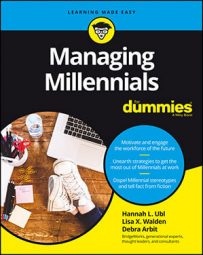Technology
Each generation has seen great technological change — Baby Boomers saw the first printers, fax machines, and computers. Generation Xers saw the first personal computers, email systems, and mobile communication devices. Millennials have grown up on an upgrade cycle of Apple products and anxiously await the next tech and social innovation. Though The Jetsons painted a futuristic society far removed from our current times, it was set in 2062, and that date is growing ever closer. While you may not be driving flying cars or enjoying the clean house kept by your robot Rosie, some technological changes are going to warp the future and influence generations at work.The future of driving
Young people have a declining interest in cars and driving with each churning of generations. While Baby Boomers worked tooth and nail to afford their first ride, Millennials and Generation Edge find cars an annoying necessity and, at times, a nuisance. Look no further than teens in your neighborhood to see kids who rely on parents and sharing car services like Uber to get from place to place. Though less of the youth demographic finds interest in driving cars, more envision a great world with self-driving cars. We’re going this way fast, and society is (for the most part) ready.Potential workplace implications include the following:
- More flexibility for working parents: They won’t be restricted by having to drop off or pick up their children at school or extracurricular events.
- Shifting working hours: Employees can start working as soon as they step into the car (effectively shortening the workday as their work time can include their ride time).
The future of wearable technology
Recently we’ve seen a huge movement toward wearable technology. The wearable tech market has introduced smartwatches, glasses, activity bracelets and rings, earpieces, and even belts aimed at either keeping you in-the-know and constantly informed or tracking some data about your life — or a combination of the two.Potential workplace implications include:
- Incredibly efficient access to information at work.
- Priming people to be constantly on the alert to any workplace notification and/or request. “Always on” will transform from a figurative statement to a literal one as well.
- A higher emphasis placed on constant data tracking, since people will be used to track data on a day-to-day, constant-feedback basis.
The future of the workplace
In general, technological changes will continue to affect where and when you get work done. They will also affect what jobs are created and what jobs are left vacant. The impacts of a tech-increased work world are extensive and include the following potential workplace implications:- New jobs will be created for every new technological change; there is no limit.
- You can work anywhere, at any time.
- There will always be more innovative ways to get work done.
- There will be an even wider array of potential workplace distractions.
Economy
The economy is fickle and will have its highs as well as its lows. Where generations fall on the economic parabola shapes how they work.- In high times: Generations whose formative years occur during a booming economy are generally optimistic. Take older Millennials as an example — though many of them graduated into a recession, for the most part, they grew up in an economically high time when conversations about money were uncommon.
- In low times: When a generation comes of age during a low economic time, their view on the future is more bleak, they are more pragmatic in their life choices, and they tend to save instead of spend. Take Generation Edge as an example — when they entered middle school, they learned the important lesson of saving when people around them suffered the impact from the recession and are now a generation of savers.
Trends
The element of “cool” is ever fleeting, but one thing remains steadfast: Youth have a powerful voice in determining the current trends. With each generation comes a new set of slang, ideologies, or even complaints about the older generation. Trends may seem unimportant, as many of them are connected to pop culture, but they tell you more about the people you work with than you might think at surface level.If you want to be on-trend, do the easy thing and just ask a young person. Develop a solid mentor relationship and ask the right questions. Most importantly, when you get those answers, don’t sit with your feet in cement, unwilling to change! Do your best to absorb the trend, consider how it works for you, and move on. To give you an idea of just how fleeting trends are, take a look at the shifts over time.
| Trend | Traditionalists | Boomers | Gen Xers | Millennials | Gen Edgers |
| Slang | Hip, no sweat, cruisin’ for a bruisin’ | Groovy, outta sight, far out | Fly, fresh, total Barnie, what’s your damage? | Talk to the hand!, Whatever!, As if!, tight | On fleek, #ratchet, lit, turnt, yaaaas |
| Fashion | Hoop skirts, three-piece suits, greasers | Polyester suits, go-go boots, bellbottoms | Shoulder pads, big hair, neon clothing, members-only jackets | Hip-huggers, scrunchies and butterfly clips, Zubaz, trucker hats | Leggings, athleisure wear, skinny jeans |
| Music | The Rat Pack, big band | Rock ’n’ roll, bubblegum pop, The Beatles, glam rock | Grunge, hip-hop, alternative rock | Teen pop — boy bands/girl groups, punk rock, R&B | Mashups, auto-tune, acoustic |
| Music shows | Radio shows | American Bandstand | MTV | MTV, BET, CMT, VH1 | YouTube, Vimeo |
| Tattoos and piercings | Tattoos are for the Navy | Hippie earrings, hippie tattoos | One ear piercing for men, multiple piercings for the ladies | All the tattoos as a form of self-individualization | TBD |

